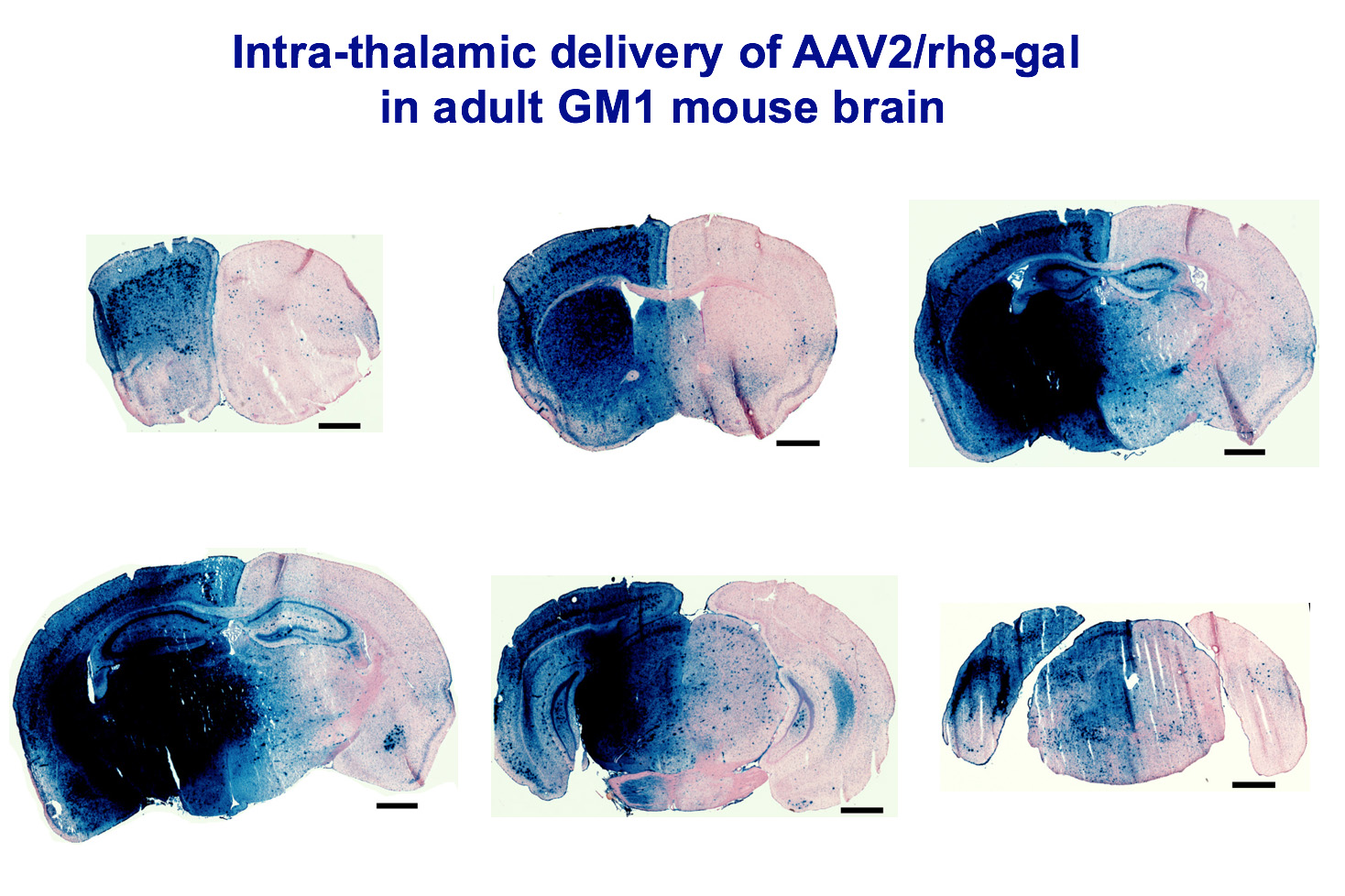GM1-Gangliosidosis
GM1-gangliosidosis (http://www.omim.org/entry/230500) is an autosomal recession disease caused by mutations in the GLB1 gene encoding for the lysosomal acid beta-galactosidase (Bgal) enzyme. The resulting enzymatic deficiency leads to accumulation of GM1-ganglioside in neurons and eventually massive neurodegeneration. The incidence of GM1-gangliosidosis is estimated at 1:100,00-200,000 live births, and there is currently no available treatment. Intracranial delivery of recombinant AAV vectors has been shown to be highly effective in animal models of this disease. Shown below, direct injection into the thalamus of the mouse brain has resulted in widespread distribution of functional enzyme throughout the same hemisphere of the brain. This has also been reproduced in cats.

In this way, AAV vectors expressing beta-galactosidase effectively reduce the GM1 content and increase the functional enzyme activity in the brain, brainstem and spinal cord of diseased mice to levels of wild-type mice.
